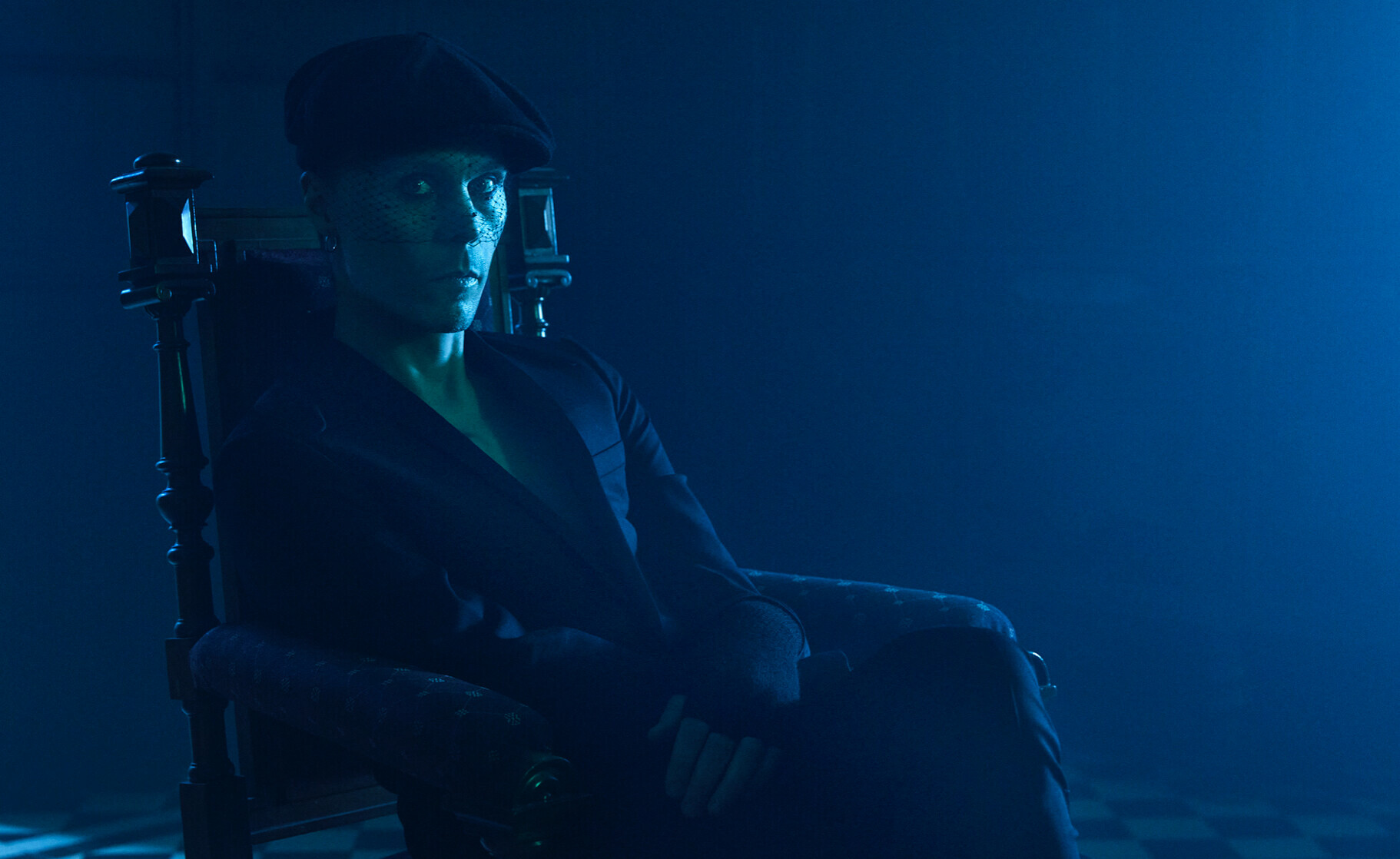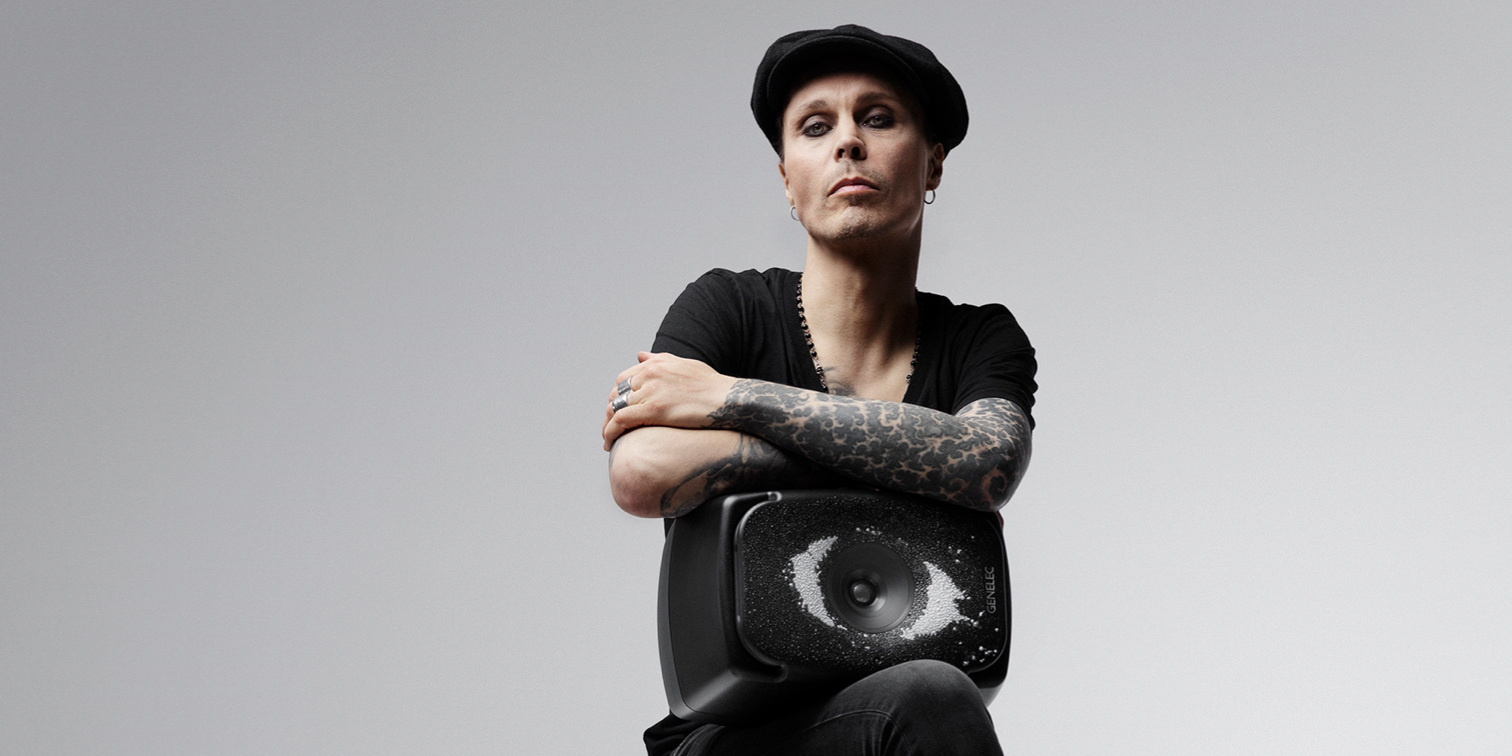Donning a jet-black hoodie and with a twilight blue curtain as his background, Ville Valo cuts something of a spectral figure when he enters Headliner’s Zoom meeting room. A pale, disembodied face seemingly floating in the middle of the screen, it could almost be the result of a Ville Valo filter effect, such is the chilly, gothic aesthetic.
Thankfully, the proverbial ice is broken almost immediately, the former HIM frontman almost surprisingly warm, chatty, and frequently funny in conversation. It’s a persona that sits slightly at odds with his well-earned status as one of the most enduring goth rock icons of the past quarter of a century. With HIM, Valo notched up eight albums, a Grammy nomination, much critical acclaim and in excess of 10 million record sales. Along the way he became one of the most venerated figures in rock and attracted one of the most devoted fan bases in music.
Today, he is joining us from his home studio in Helsinki, where he recently completed work on his debut solo album Neon Noir. Six years on from the cessation of HIM, it is a solo record in every respect. Each and every track was written, recorded, engineered, and produced by Valo himself, a result of lockdown restrictions and a long-held ambition to test himself further in the studio.
“It feels like losing my virginity with the release of my first solo album,” he grins. “By some miracle I’ve been able to pull this one off. It feels unreal, having worked all by myself since the pandemic. I was painted into a corner because of the pandemic, but I’m also a fan of Prince, Andrew Eldridge, and those dictators [laughs] that create very singular visions of what they want to hear, and I always wanted to do the same, so here we are.”
The fact that he was working alone wasn’t the only distinguishing feature on Neon Noir. Having spent over 20 years following essentially the same creative mechanics, Valo was determined to completely reinvent his approach to writing and accumulating material.
“Having a band that rehearses 15 songs for four months, then hits the studio, records, gets it mixed and puts it out… I’ve done that so many times and wanted to challenge myself,” he says. “Also, on this album I finished one song at a time. I’d do one song from scratch, including mixing it, and only then would I move on to the next one. I didn’t have any other ideas or melodies prepared; it was just one song at a time. I also had a weird setup – everything was set up in a circular fashion, so if I wanted to re-track drums at whatever point I had everything ready to go at all times. That’s what I loved about working on this album, it was so free.”
While there was a degree of learning on the fly while making Neon Noir, Valo explains that he had a clear idea of the sonic identity he wanted to convey.
“I wanted it to be a gothic Phil Spector record in stereo,” he states. “I wanted a massive, pompous wall of sound, but as a rock record. Phil Spector used to do lots of doubling of bass and drums, so it becomes this big wash. That’s something I’ve always loved but I want to bring a bit more Black Sabbath into proceedings. I was able to spend a lot of time on those details.
“Regarding engineering, because I was working by myself and on nobody’s clock, I didn’t have to compromise my time and it enabled me to follow the sound. I was writing and producing and recording at the same time, so if a sound tickled me in the right spots, I was following that sound until the very end to see where that sound and, in the end, that song would take me. That was such a creatively new experience because usually in bands they are separate processes – writing, rehearsing, tracking. This time it all happened at once and I have never gotten so many goosebumps working on music ever. And being an elderly chap, it was about time,” he laughs.





